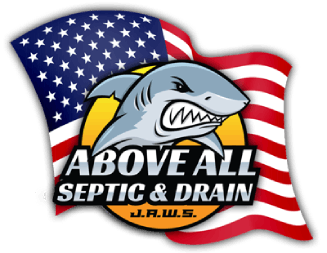Proper maintenance of your septic system is essential to keeping it working efficiently and making it last. The average household septic system should be cleaned and inspected at least every 3-5 years. If your system has an effluent filter, they should be cleaned yearly. If your system does not have an effluent filter, we can add one. Outlet effluent filters are very helpful in keeping solids out of your drain field. Alternative systems with pumps, float switches or other mechanical components should be inspected once a year. Not performing the normal and proper maintenance will create problems such as slow drains, sewer backup, system damage, drain field failure, foul odor and environmental contamination. Contact Above All Septic & Drain to schedule your service.
Comprehensive Signs Your Tank Needs Service
- Sewage backups in toilets, sinks, or floor drains
- Slow drainage throughout the home consistently
- Strong sewage odors around the tank or drain field area
- Lush, green grass or pooling water over the septic tank
- Gurgling sounds from plumbing fixtures when draining
- High water levels visible in inspection ports
- Septic alarms activated on advanced treatment systems
- Toilet paper or solid waste visible in inspection chambers
Complete Pumping and Cleaning Process
- Pre-service tank location and safety assessment
- Proper confined space entry protocols and gas monitoring
- Systematic pumping of scum layer, liquid, and sludge
- High-pressure washing of tank walls and baffles
- Inlet and outlet baffle inspection and cleaning
- Effluent filter removal, cleaning, and reinstallation
- Tank structural integrity assessment
- Detailed photo documentation and service reporting
Different Tank Types and Cleaning Requirements
- Single-compartment concrete tanks and cleaning procedures
- Multi-compartment tanks requiring complete pumping
- Fiberglass and plastic tank special considerations
- Steel tank inspection for corrosion and structural issues
- Advanced treatment units with specialized cleaning needs
- Aerobic treatment systems requiring component maintenance
- Grease trap integration cleaning for commercial properties
- Pump tanks and dosing chambers in pressure distribution systems
Effluent Filter Services and Benefits
- Types of effluent filters and their specific benefits
- Installation process for tanks without existing filters
- Proper cleaning techniques and frequency requirements
- Signs of clogged or damaged filters
- Filter replacement timelines and upgrade options
- Cost savings from preventing drain field damage
- Integration with overall septic system maintenance
- Regulatory compliance benefits in some jurisdictions
Factors Affecting Pumping Frequency
- Household size and daily water usage patterns
- Garbage disposal use and food waste habits
- Laundry frequency and detergent selection
- Guest usage and seasonal occupancy changes
- Tank size relative to household needs
- Age and efficiency of the septic system
- Soil conditions and drain field performance
- Use of septic-safe products and additives
Emergency Septic Pumping Services
- 24/7 emergency response for sewage backups
- Holiday and weekend availability for urgent situations
- Rapid response for health hazard conditions
- Same-day service for critical system failures
- Emergency contact information prominently displayed
- Coordination with plumbers for backup-related issues
- Temporary waste management during emergency repairs
Residential vs. Commercial Services
- Single-family home standard pumping procedures
- Multi-family residential complex coordinated service
- Restaurant and food service high-grease systems
- Office building and commercial facility maintenance
- Industrial facility specialized waste management
- Seasonal business adjusted maintenance schedules
- Property management contract services and reporting
Proper Septic Care Between Services
- Water conservation tips to reduce system load
- Proper disposal practices for household chemicals
- Toilet paper and flushable product recommendations
- Garbage disposal alternatives and composting options
- Septic-safe cleaning products and detergents
- Landscaping considerations around septic components
- Avoiding excessive water usage during single events

